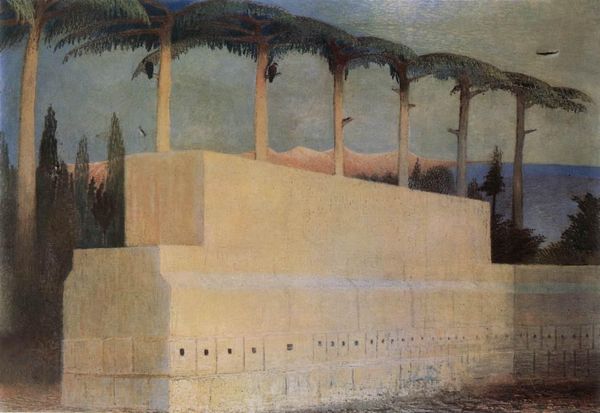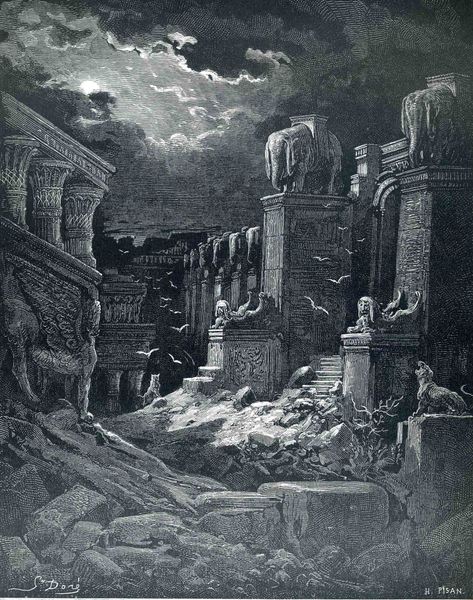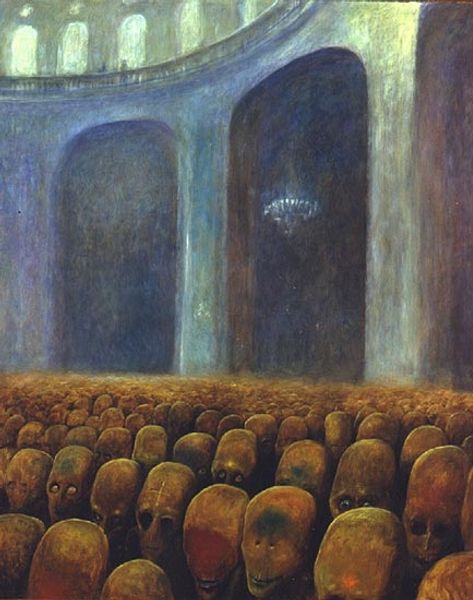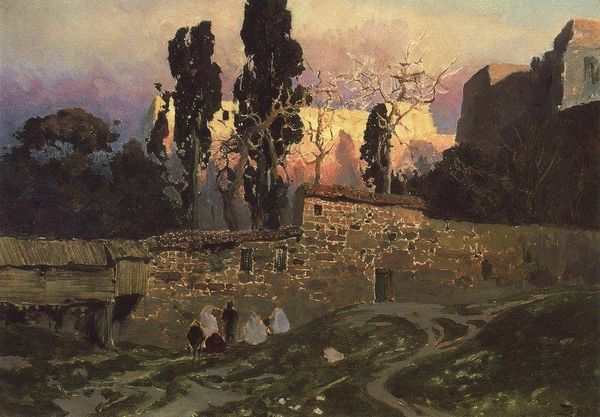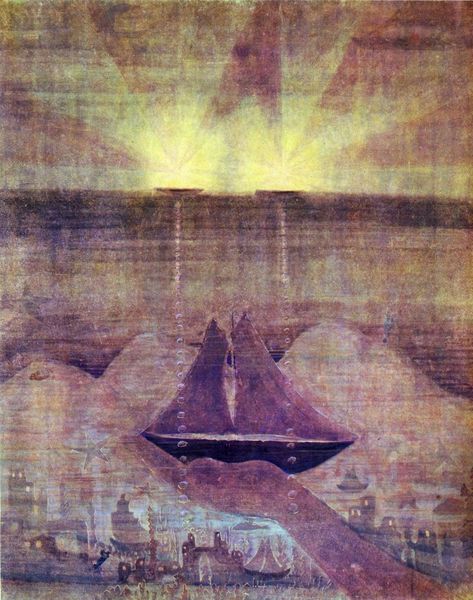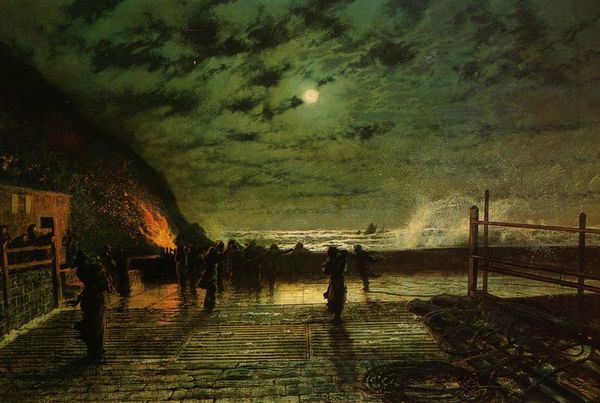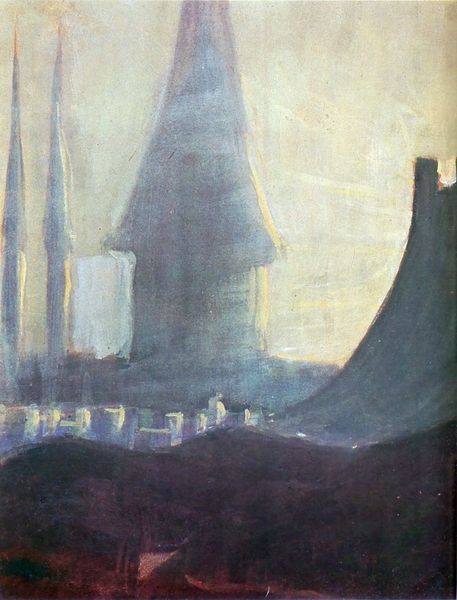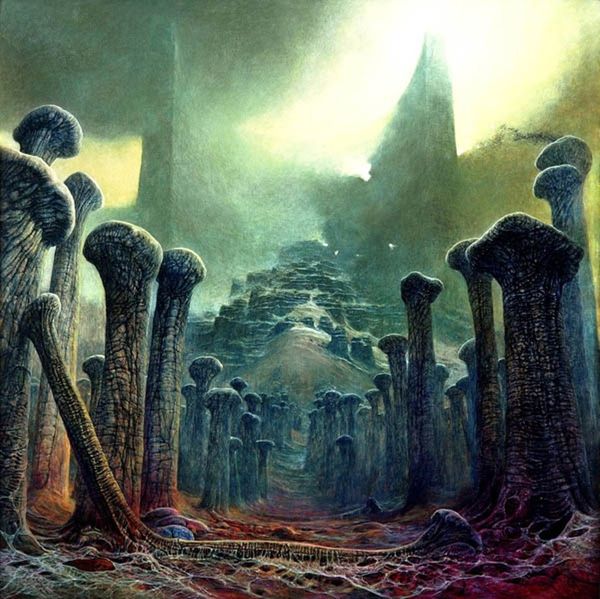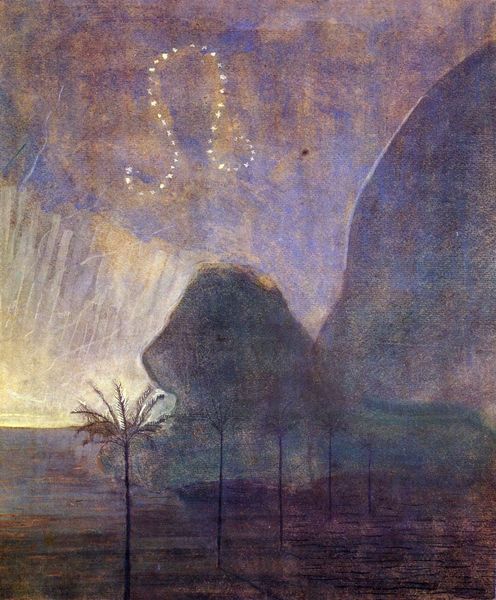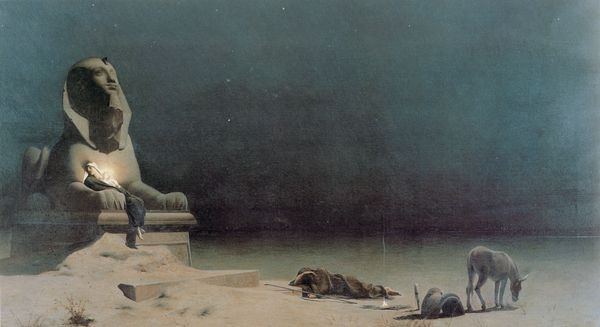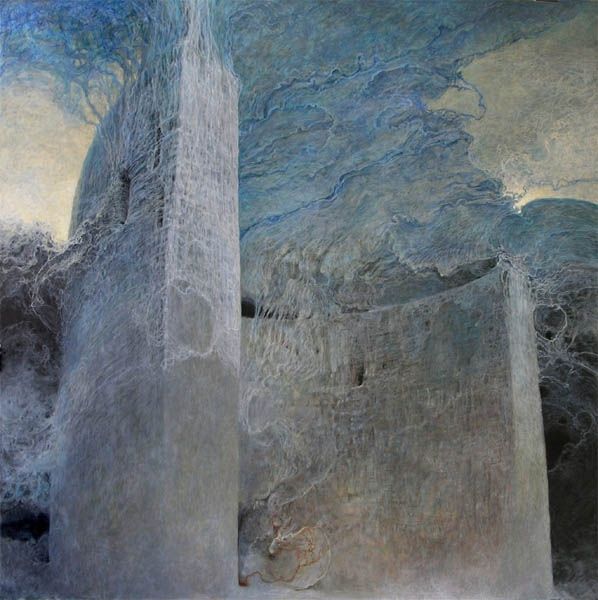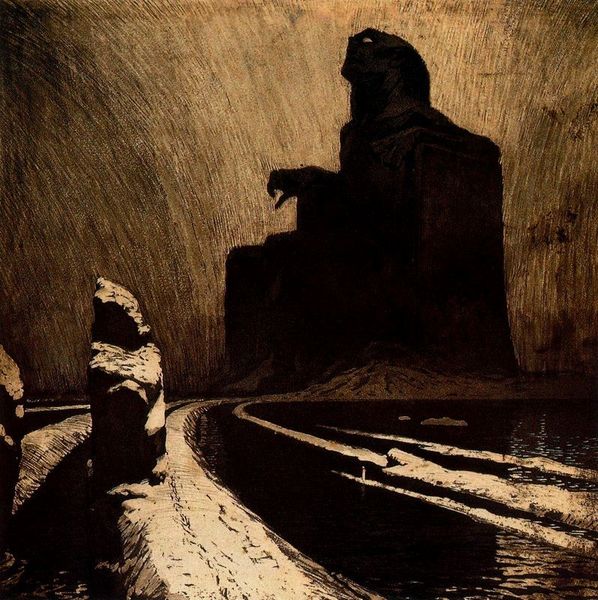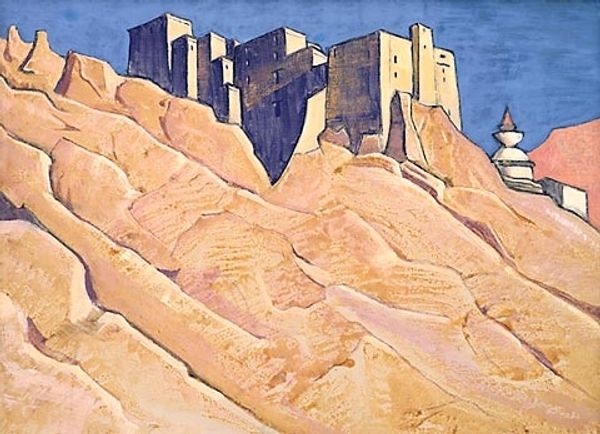
tempera, painting
#
portrait
#
allegories
#
statue
#
tempera
#
symbol
#
painting
#
landscape
#
painted
#
figuration
#
ancient-mediterranean
#
symbolism
#
history-painting
Copyright: Public domain US
Editor: We're looking at František Kupka's "The Way of Silence," painted in 1903. It appears to be tempera on canvas. The sheer scale, depicted by that tiny figure dwarfed by the monumental avenue of sphinxes...it feels quite dreamlike and unsettling. What do you see in this piece? Curator: For me, it's a kind of visual poem, almost a philosophical proposition rendered in paint. The overwhelming scale is deliberate, creating a sense of humanity’s smallness in the face of time and the universe. Look at the almost theatrical lighting—the dark sky sprinkled with stars—it pushes this effect even further, don't you think? Editor: It does, it really does. It’s as if the individual is swallowed up by history. Curator: Precisely. And Kupka was deeply invested in spiritual and philosophical ideas, right? Symbolism pulses through this painting, particularly this avenue of sphinxes which suggests a journey, or perhaps a procession into the unknown, into that silent world where meaning itself transforms. What would the silent journey consist of? That’s a task for us. Editor: It almost feels like a premonition, something that precedes abstraction even though the figures and objects are clearly representational. Curator: Absolutely! He's dancing on the edge. See how the sphinxes begin to lose detail further in the avenue, becoming shapes more than things. Kupka's searching for something beyond the visible, wouldn’t you agree? It's like he's peeling back the layers of reality itself. Editor: I definitely agree. I hadn't fully appreciated the symbolism before. Thanks, that really changed how I see it. Curator: My pleasure. And now it speaks even clearer than before.
Comments
No comments
Be the first to comment and join the conversation on the ultimate creative platform.
